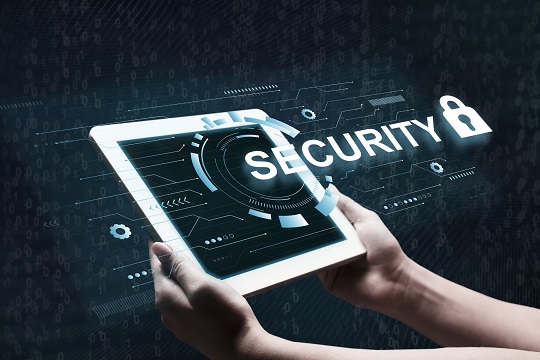In today’s digital-first world, businesses and educational institutions face an increasing number of cyber threats. From phishing scams to ransomware attacks, cybercriminals are continuously developing new strategies to exploit vulnerabilities. While advanced security systems and firewalls are essential, the greatest line of defense lies not in technology alone but in people. Employees, students, and even educators often unknowingly become entry points for hackers. This is where Cybersecurity Training Software comes in—empowering individuals to recognize, respond to, and prevent threats, effectively building a strong human firewall.
The Importance of Human Firewalls
A traditional firewall filters out suspicious activity at the network level, but a human firewall refers to people who are trained and aware enough to avoid falling victim to cyberattacks. Consider this: most successful breaches occur due to human error. Clicking on a malicious link, downloading unsafe files, or failing to recognize social engineering attempts can expose sensitive information. By equipping users with the right cybersecurity awareness and tools, organizations drastically reduce the chances of successful attacks.
What Is Cybersecurity Training Software?
Cybersecurity Training Software is a specialized platform designed to train employees, students, and professionals on best practices for online safety. Unlike one-time workshops, this software offers continuous, interactive learning modules that help users build long-term cybersecurity habits. It can cover a wide range of topics including:
-
Phishing detection
-
Password management
-
Data privacy compliance
-
Social engineering threats
-
Safe browsing habits
-
Remote work security protocols
Most solutions are powered by Learning Management Software, making the training engaging, trackable, and scalable.
Building Cybersecurity Awareness with LMS
Organizations are increasingly turning to Learning Management Software to deliver effective training. By leveraging an LMS, cybersecurity awareness programs become more interactive and impactful. Employees or students can access bite-sized modules, take quizzes, and even participate in simulated phishing tests.
For example, an LMS For School can include cybersecurity awareness sessions for students who are spending more time online for digital classes. Similarly, LMS for Students provides modules on identifying cyber threats in their digital environment, ensuring they are equipped with practical skills to protect their personal data. At a higher level, LMS for Higher Education helps universities create structured, certified cybersecurity training that prepares graduates for professional environments where digital threats are common.
By integrating cybersecurity training into an LMS, organizations create a learning culture that emphasizes safe digital practices at every level.
Advantages of Cybersecurity Training Software
1. Prevents Costly Data Breaches
Cybersecurity breaches can cost businesses millions in fines, reputational damage, and data loss. Training employees to spot threats drastically reduces the risk of human error leading to attacks.
2. Customizable and Scalable
Cybersecurity Training Software can be customized to fit the unique risks of different industries. For example, healthcare organizations need HIPAA compliance training, while financial services focus on protecting client transactions. Using Learning Management Software, administrators can tailor content for specific teams or departments.
3. Gamified Learning for Engagement
Unlike traditional training sessions, cybersecurity software often integrates gamified modules—badges, leaderboards, or scenario-based simulations—that make learning more engaging. This ensures better retention of cybersecurity best practices.
4. Supports Remote and Hybrid Workforces
With the rise of remote work, employees access company data from various networks and devices. Training software provides them with ongoing guidance on how to stay secure outside the office environment.
5. Applicable Beyond Businesses
While companies gain immense value, the impact of cybersecurity training extends to education. Schools, colleges, and universities benefit from using LMS for School, LMS for Students, and LMS for Higher Education to ensure that the next generation grows up digitally literate and cyber-aware.
Cybersecurity Training Beyond IT Teams
A common misconception is that cybersecurity is solely the IT department’s responsibility. In reality, every individual in an organization plays a role in maintaining digital security. Hackers often target non-technical staff because they are more likely to overlook suspicious emails or requests. Cybersecurity Training Software ensures that employees across departments—from HR and finance to sales and operations—are equally prepared.
In fact, even sales teams benefit significantly. When combined with Sales Training Software, cybersecurity modules can be included to train sales professionals on protecting sensitive client data, handling digital contracts securely, and avoiding fraudulent communications. This combination strengthens both skill development and cybersecurity awareness.
How Cybersecurity Training Software Creates a Human Firewall
A strong human firewall is not created overnight. It requires continuous learning, reinforcement, and testing. Cybersecurity Training Software contributes to this by:
-
Raising Awareness: Through interactive modules, employees learn how to identify and avoid cyber threats.
-
Reinforcing Good Habits: Regular training ensures secure practices like multi-factor authentication and strong password usage become second nature.
-
Testing Real Scenarios: Simulated phishing campaigns test employees in real-world scenarios, highlighting vulnerabilities.
-
Tracking Progress: With built-in analytics from Learning Management Software, managers can track who has completed training, measure performance, and identify areas of improvement.
Over time, this builds a vigilant workforce that not only avoids risks but also reports suspicious activities, creating a culture of security.
The Role of Education in Cybersecurity
Students today are digital natives, but being comfortable online doesn’t always translate to being safe. Schools and colleges must prepare students to recognize cyber threats. By incorporating cybersecurity awareness into curricula through LMS for School, LMS for Students, and LMS for Higher Education, institutions ensure learners are not just academically strong but also digitally responsible citizens.
For example, a university could integrate cybersecurity awareness as part of its orientation program using an LMS. This ensures students know how to protect personal devices, secure online accounts, and avoid academic fraud.
Final Thoughts
In the digital era, cyberattacks are inevitable, but damage is preventable. Technology alone cannot protect organizations and institutions—people are the first and most critical line of defense. By investing in Cybersecurity Training Software, businesses, schools, and universities create a strong human firewall that reduces risks, safeguards data, and fosters a culture of digital responsibility.
Whether it’s delivered through Learning Management Software, an LMS for School, an LMS for Students, or even integrated with Sales Training Software, cybersecurity training empowers individuals to become proactive defenders of digital safety. In a world where threats evolve daily, the strongest firewall isn’t just in the system—it’s in the people who use it.
- How Cybersecurity Training Software Builds a Strong Human Firewall?
- Discover how Cybersecurity Training Software transforms employees and students into a strong human firewall, enhancing awareness, reducing risks, and safeguarding organizations with Learning Management Software and digital security training.
- Cybersecurity Training Software, Learning Management Software, LMS For Schools, LMS For Students
Related posts:
 Nursing Assignment Help Improves Learning for Students In Australia
Nursing Assignment Help Improves Learning for Students In Australia
 What Are the Benefits of the Swami Vivekananda Scholarship for Students?
What Are the Benefits of the Swami Vivekananda Scholarship for Students?
 How PaperLoft’s Online Interior Design Course Sets You Apart in the Industry?
How PaperLoft’s Online Interior Design Course Sets You Apart in the Industry?
 Top-Rated Physics Coaching Institutes for NEET Aspirants 2025
Top-Rated Physics Coaching Institutes for NEET Aspirants 2025
 How NDE Inspection Is Evolving for Surface Crack Detection in Aerospace Components
How NDE Inspection Is Evolving for Surface Crack Detection in Aerospace Components
 Navigating Academic Excellence Through Competency-Based Nursing Education
Navigating Academic Excellence Through Competency-Based Nursing Education
 APEGS Competency Assessment Top in 2025 for Australian Users
APEGS Competency Assessment Top in 2025 for Australian Users
 U.S.-Canada Peace Movement A Shared Path Toward Justice, Solidarity, and Lasting Peace
U.S.-Canada Peace Movement A Shared Path Toward Justice, Solidarity, and Lasting Peace




